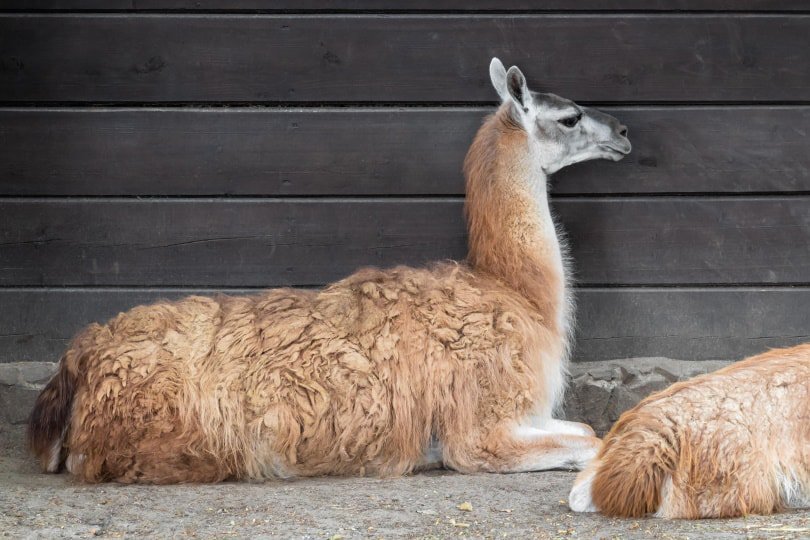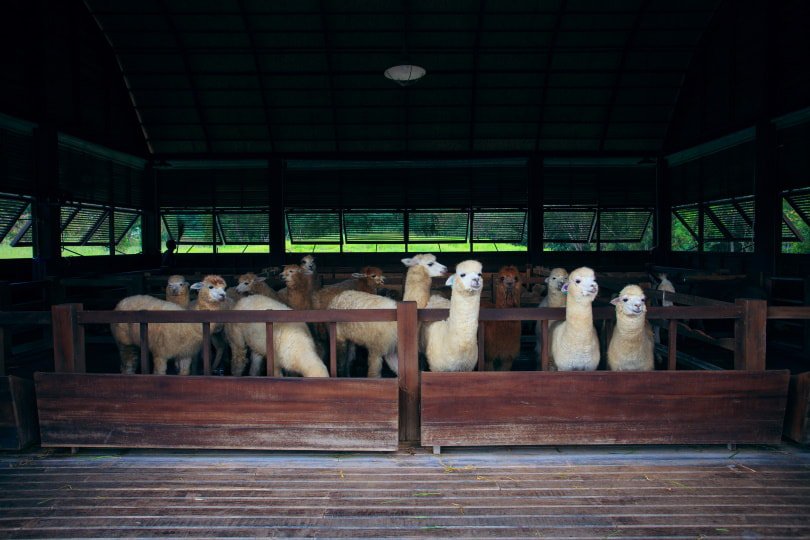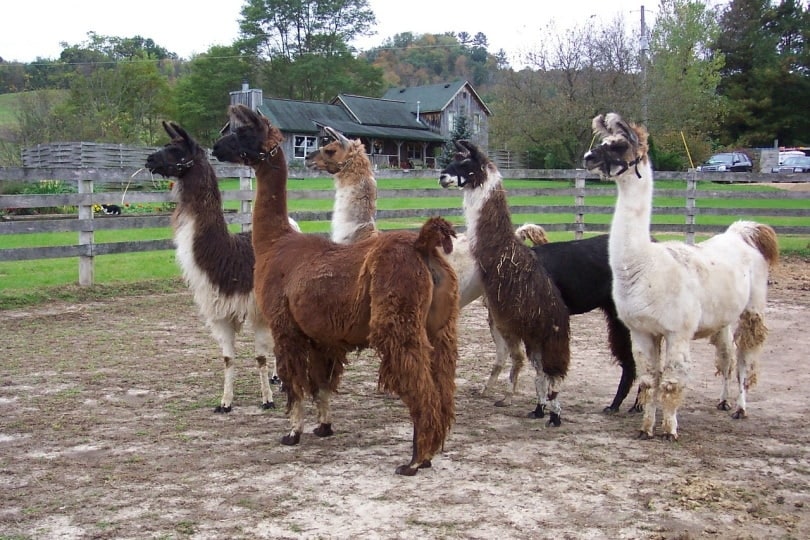When you’ve decided to bring a llama into your life, you must create a proper habitat to ensure the animal can live a long, happy, and healthy life. Like any farm animal, a llama will be content when it’s given an ample and safe outdoor space for it to roam and graze as well as a proper indoor shelter to keep it out of the elements.
As a large animal, a llama needs plenty of space to roam outdoors and adequate room indoors to move about freely. They will require at least 40 square feet of space. We’ll cover how much space a llama needs both indoors and outdoors to help you get a good start on setting up your habitat.

Creating an Indoor Living Space for Llamas
Llamas have an impressive ability to properly deal with most types of climates, but these camelids do need adequate indoor shelters. Llama owners use a variety of materials and structures for housing their animals from small three-sided shelters and sheds to barns. If possible, give your llama access to a fully enclosed barn that’s properly ventilated.
A small pole barn is the ideal type of structure that isn’t affected by inclement weather, water, and wind. A pole barn is also easy to get in and clean which is something that must be done regularly to keep your animal healthy.
If you happen to live in a warm climate, you can get away with housing your llama in a three-sided shelter or shed that faces away from the prevailing wind. Regarding how big of an indoor space a llama needs, count on giving your animal at least 40 square feet of space.
The flooring should be dirt if possible, so your llama won’t slip and hurt itself. If your flooring happens to be cement, you can put down a few inches of dirt or install durable rubber mats. Under no circumstances should your flooring be bare cement or hardwood as these materials get slippery when wet.

Straw Bedding is a Must
Since llamas like to bed down in straw, your indoor living space should include plenty of dry clean straw. If you live in an area that has harsh winters, be sure to put down extra straw during the winter months for more warmth.
You’ll need to remove and replace all wet and dirty straw to prevent your llama from getting sick. The good news is that unlike many farm animals, llamas tend to use the same area in their indoor enclosure to poop and pee. Get in the habit of cleaning out the enclosure every couple of days so you can stay on top of the mess.
Regulating the Indoor Environment Is Important
Your llama’s indoor living space should be waterproof and free of drafts, in both summer and winter. If a llama is subjected to high heat combined with high humidity, the animal can become dehydrated and exhausted. This is why it’s important to ensure your llama can stay cool during the hot weather months by providing it with fresh clean water around the clock.
Your llama’s thick winter coat will keep the animal warm unless your indoor living space is too large. Even though a llama can keep itself warm, your barn or indoor shelter must be properly ventilated during the winter and insulated from drafts. Therefore, you should not provide your llama with an oversized indoor shelter.
If you must, you can use ceramic heaters in your shelter or better yet, radiant floor heating that’s covered with dirt because it’s safer. Remember that barn fires happen, and they often result in terrible consequences so be super careful with any artificial heat source.

Creating an Outdoor Habitat
Your llama will need an enclosed outdoor habitat where it can spend time during the day grazing. This outdoor space should be fenced in using fencing that can’t be easily breached. Wood is a great material to use for fencing as is galvanized wire. A llama’s fence should be at least 4-5 feet high to ensure the animal can’t jump over it.
A good thing about keeping llamas is that these animals tend to steer clear of fencing. This means your fence doesn’t have to be extra durable, but it must be robust enough to keep your animal safe and secure.
It’s important to know that some materials and plants are toxic to llamas so be sure the outdoor space you plan to use for your animal contains only llama-friendly plants. If you’re unsure if your land is free of plants that can harm your llama, check with your local government’s agricultural department to find out what plants may be living there.
Your llama needs about an acre of land to graze on. A llama is a hearty animal and one that can easily survive and thrive on a good quality pasture, even if you’re supplementing your animal’s diet with feed hay. Llamas are not picky eaters and some of the things they like to graze on include a variety of grasses, alfalfa, clover, dandelions, and blackberries.
The outdoor habitat should not be consistently wet or muddy as your llama needs to be able to keep its feet dry to avoid problems like foot fungus and infections.


Conclusion
As you can see, it’s not difficult to create a great home for a llama. As long as you provide the animal with at least 40 square feet of indoor living space and an opportunity to get outside daily to graze, your llama should adapt well to its new home and live a long and healthy life!
Featured Image Credit: Pixabay
